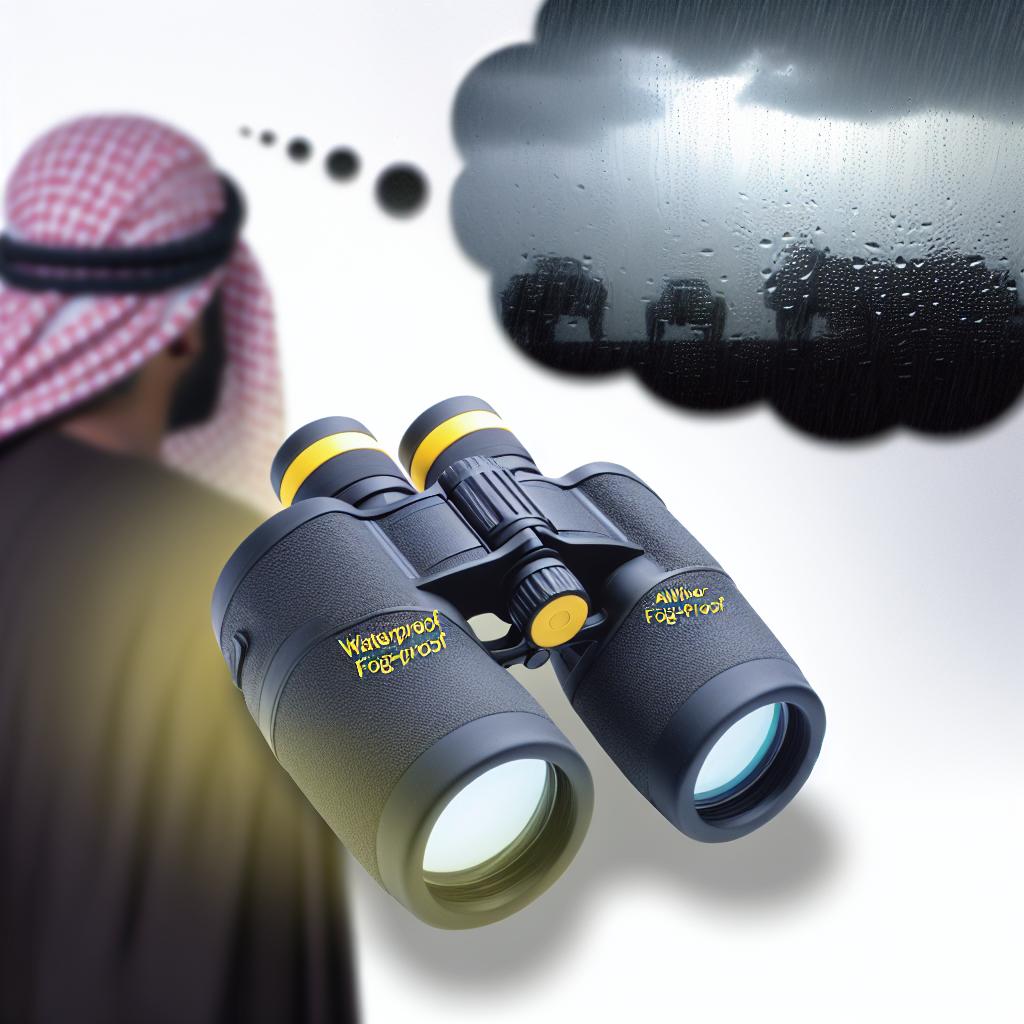Understanding Waterproof and Fog-Proof Binoculars
When considering the purchase of binoculars, one may encounter terms like “waterproof” and “fog-proof.” Understanding these features’ significance is essential for potential buyers as they directly impact the durability and performance of the optical instruments in various environments and weather conditions.
What Does Waterproof Mean in Binoculars?
In the context of binoculars, waterproofing refers to the instrument’s ability to withstand water exposure without sustaining damage. Many models are designed to resist rain, splashes, or even full immersion for a limited time. This feature is particularly critical for outdoor enthusiasts and professionals who work in diverse conditions, as it enhances the durability and longevity of the binoculars.
The level of waterproofing in binoculars can vary significantly between models. Some might be splash-proof, providing resistance to rain and light water exposure, while others adhere to specific industry standards like the IPX rating, which assesses water resistance among electronic devices and optics. Well-engineered waterproof binoculars may have tight seals and O-rings that prevent water ingress, ensuring the internal optics stay dry even if the binoculars are fully submerged.
How Do Binoculars Become Fog-Proof?
Fog-proof binoculars are engineered to prevent the internal lenses from fogging, a common issue when changing temperature environments. This is typically achieved by purging the air inside the optical housings and replacing it with a dry gas such as nitrogen or argon. This process eliminates moisture, which is the root cause of internal condensation that leads to fogging.
The application of dry gas inside the lenses creates a stable internal environment, making these binoculars suit differing atmospheric pressures and temperatures. Without this feature, binoculars might experience internal condensation when moved from colder to warmer areas, leading to foggy lenses that can severely impair visibility.
Who Benefits from These Features?
The necessity of waterproof and fog-proof binoculars varies depending on the intended use and environment. Below are some scenarios where these features become crucial.
Outdoor Enthusiasts and Hikers
For those who frequently explore the outdoors, unpredictable weather conditions are a standard part of the experience. Whether it’s unexpected rainfall during a hike or a river crossing in wet conditions, having binoculars that can endure water exposure without damage is invaluable. Waterproof binoculars can withstand these hazardous conditions, enabling outdoor aficionados to enjoy their expeditions without worrying about equipment failure.
Birdwatchers
Birdwatching often involves early morning activities when dew and fog are prevalent. During these early hours, the moist environment can cause regular binoculars to fog up, blocking sightlines to birds. Fog-proof binoculars are crucial in these situations as they ensure lenses remain clear, providing an unobstructed view of avian life without the hindrance of condensation.
Marine Applications
Sailors and boaters benefit significantly from waterproof binoculars due to constant exposure to water splashes. When navigating open waters, binoculars are essential tools for spotting faraway objects and signs of land. Waterproof features keep the optics functional despite splashes and spray. Fog-proof characteristics further improve visibility during abrupt temperature changes on the water, such as transitioning between sections of sun and shade or variable weather conditions.
Hunters
Hunters often navigate through various climatic conditions, ranging from humid forests to dry plains. Reliable optics that resist fogging and water damage are crucial for maintaining a clear and uninterrupted line of sight. Whether hunting in early morning fog or rain-drenched environments, waterproof and fog-proof binoculars ensure that the target remains in view without the need for frequent adjustments or drying of lenses.
Considerations Before Purchase
The advantages of waterproof and fog-proof binoculars are clear, but these enhanced features often come at a higher cost due to the additional technology and materials involved in their construction. Therefore, potential buyers should weigh several factors before making a purchase decision:
– Intended Use and Exposure: Assess how often and in what conditions the binoculars will be used. If the activities involve frequent exposure to harsh or wet environments, investing in higher-grade waterproof and fog-proof models is advisable.
– Budget and Performance Goals: Determine the balance between cost and the level of performance needed. While high-end models may offer superior protection and clarity, budget models still provide substantial benefits for casual users.
– Brand Reputation and Reviews: Different manufacturers offer various models with unique features. Researching brand reputations and customer reviews can provide insights into the reliability and performance of specific products.
Before finalizing a purchase, reading up on optics technology can provide a comprehensive understanding that benefits long-term satisfaction. Binoculars suited to environmental specifications ensure a sound investment and enhance outdoor experiences.
For further information on selecting the right binoculars, you may explore resources that dive deeper into optics technology beyond this overview.
Ultimately, choosing to invest in waterproof and fog-proof binoculars significantly enhances reliability and performance, making them worth considering for anyone serious about their outdoor activities. Such investments lead to peace of mind, with users knowing their equipment can withstand various environmental challenges without compromising on quality. The blend of durability and optical clarity ensures consistent performance, fulfilling the expectations of professional and amateur users alike.
This article was last updated on: May 31, 2025


